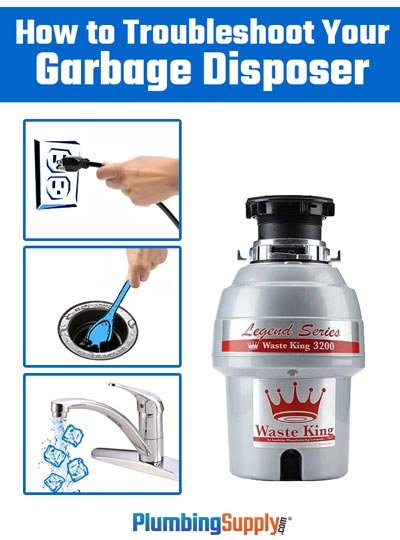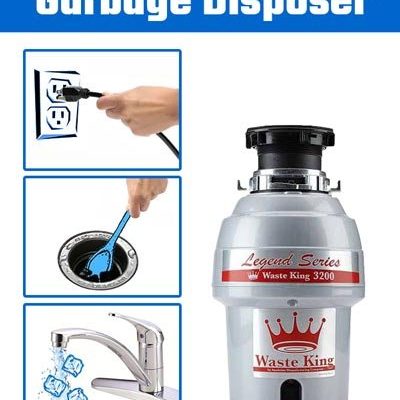
Understanding how your garbage disposal works is the first step in avoiding error codes. Your disposal is like a small but mighty kitchen companion that grinds up food waste into tiny pieces. It’s designed to handle a lot, but not everything. When you see error code E1, it’s indicating that there’s a jam or issue with the motor. Similar to a blender that’s trying to crush something it shouldn’t, your disposal struggles and sends out an error signal. The good news? With a little care and attention, you can prevent these hiccups from turning into bigger headaches. Here’s how.
Knowing What Causes Error Code E1
To prevent error code E1, it helps to know what causes this issue in the first place. At its core, this error is your disposal’s way of saying, “Help! I’m stuck!” It’s typically due to clogs or jams in the system. Think of your disposal as a highway; if there’s a traffic jam caused by things being where they shouldn’t, the whole system grinds to a halt.
Often, the culprits are improper waste materials. Fibrous items like celery stalks, potato peels, or coffee grounds might seem harmless, but they can twist around the blades or create buildup within the unit. Imagine trying to cut a rope with scissors—it’s not going to be easy, and it might just jam them up. Similarly, grease and fats can cool and solidify, acting like sticky glue. This isn’t just a messy situation; it’s the perfect recipe for a clog.
Recognizing these triggers can make a world of difference. By being mindful of what you toss into your disposal, you’ll reduce the chances of experiencing a code E1. Next time you clear your plates, consider composting fibrous materials and discarding fats in the trash. This small change can keep your garbage disposal running like a well-oiled machine.
Routine Maintenance Tips
Routine maintenance is crucial to preventing future problems with your garbage disposal. Think of your disposal like a bicycle. If you never oil the chain or check the tires, it’s bound to break down at the worst possible time. Similarly, your garbage disposal requires regular attention to keep performing at its best.
First, always run cold water when using your disposal. Cold water helps solidify any fats, making them easier to chop up and flush through the system. Also, regularly grinding a few ice cubes can help sharpen the blades and break up any unwanted buildup, much like a dentist scraping off plaque to keep your teeth healthy.
Another key is to clean your disposal periodically. You can do this by pouring some baking soda and vinegar down the drain. This natural concoction acts as a gentle scrub, fizzing away residues that cause smells or blockages. Just like you’d wash your car to keep it shining, cleaning your disposal can help it run better and longer.
What To Do When Error Code E1 Strikes
Despite your best efforts, error code E1 might occasionally appear. When this happens, don’t panic. Consider it an opportunity to fine-tune your appliance skills. Handling it yourself is often quicker and cheaper than calling in a professional.
First, ensure the disposal is off and unplugged. Safety is paramount here. You wouldn’t start tinkering with a toaster still plugged in, right? Similarly, make sure everything is safe before you begin. Next, check inside the disposal for any visible obstructions. Use a flashlight to get a good look, but never use your fingers—opt for tongs or pliers instead.
If it’s still not working, locating the reset button underneath the unit could be your saving grace. Pressing this button is like hitting the restart on your computer when it freezes. It can give your disposal a fresh start, free of errors.
Long-term Prevention Strategies
Taking a proactive approach can save you from future headaches. Regularly educate yourself on the best practices for your disposal. Don’t just treat it as another appliances—think of it as a part of your family kitchen. Understanding its needs can prevent unexpected interruptions.
Consider implementing a monthly check-up routine. Examine your disposal for anything unusual and practice the maintenance tips already mentioned. It’s akin to visiting the dentist—regular check-ups can prevent bigger issues down the line.
Finally, make it a rule of thumb to only dispose of waste that your unit can handle. This seemingly simple habit protects not just the motor but all moving parts, ensuring your disposal remains trouble-free.
In conclusion, error code E1 is not the end of the world. By understanding its causes and taking steps to prevent it, your Waste King garbage disposal can serve you faithfully for years. Treat it well, and it’ll return the favor, keeping your kitchen clean and efficient without the fuss of unexpected stoppages.
